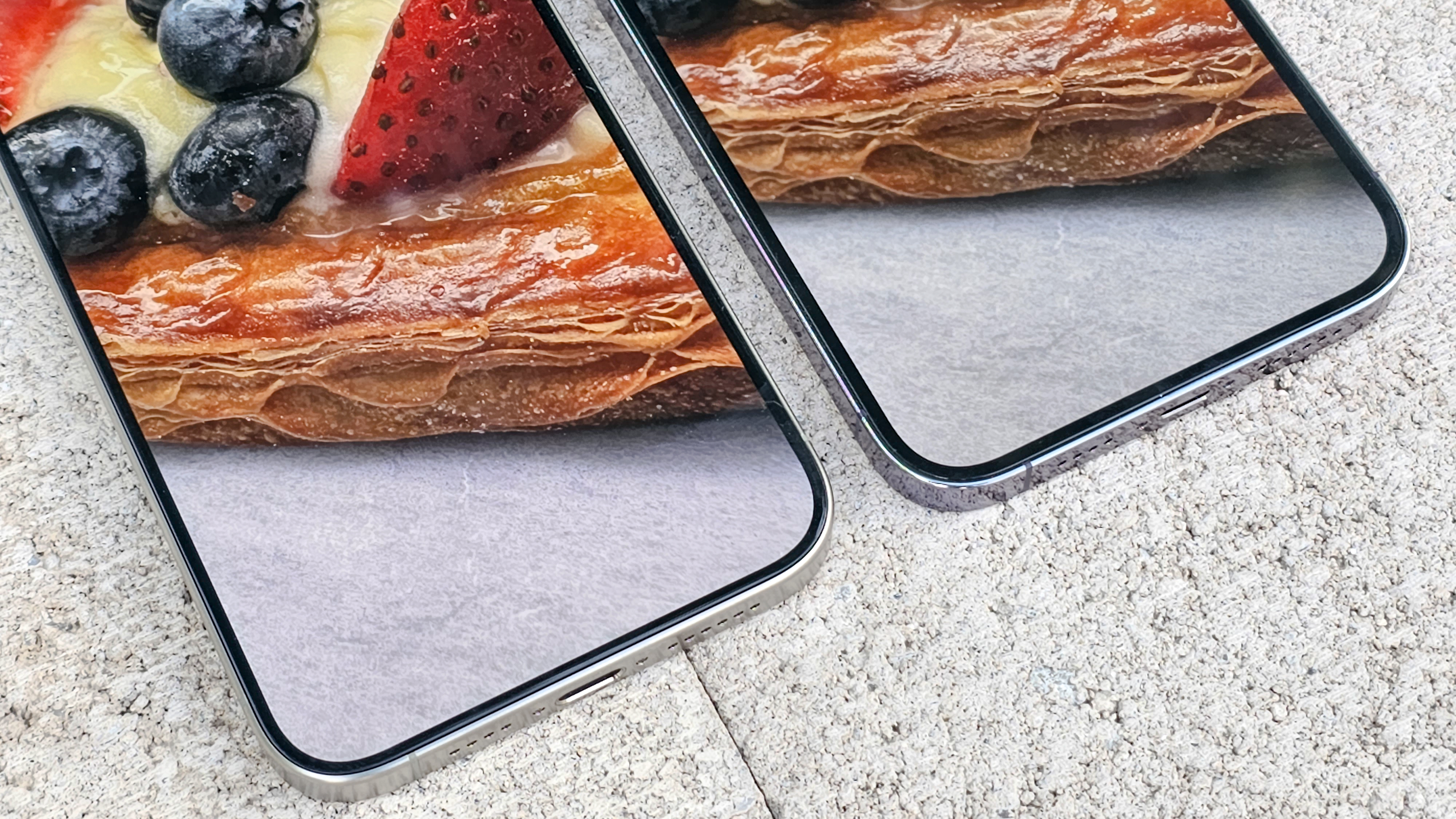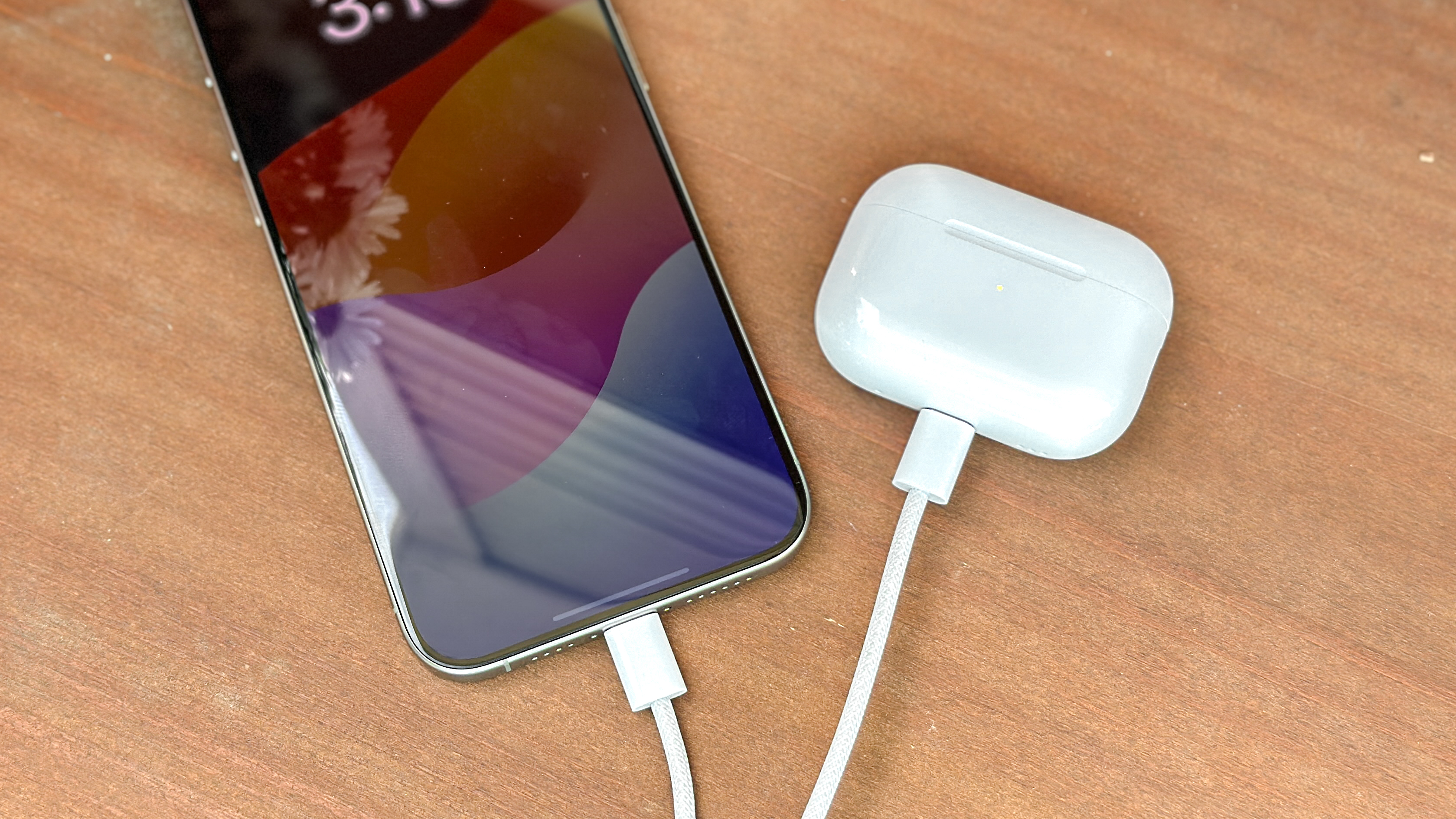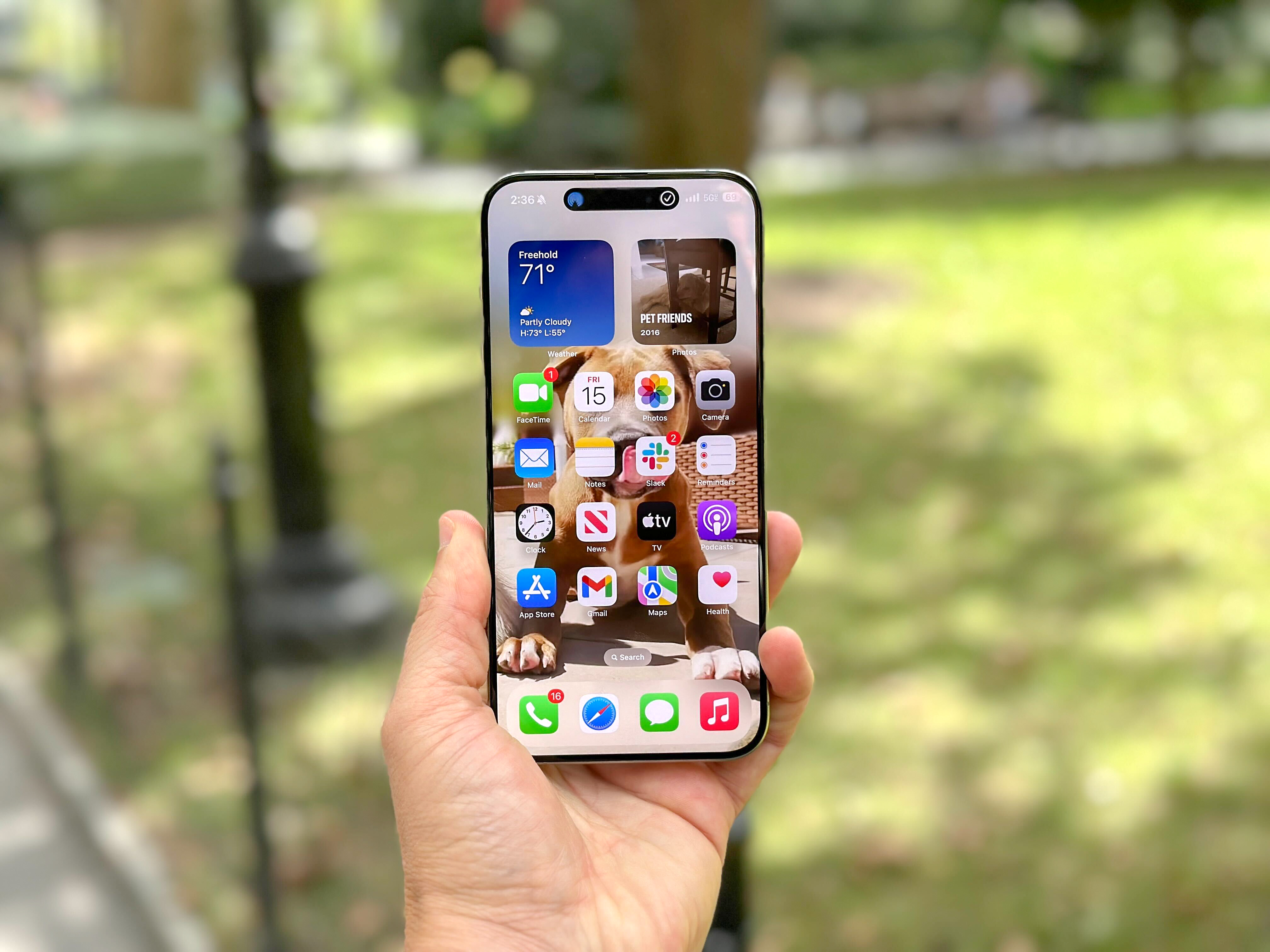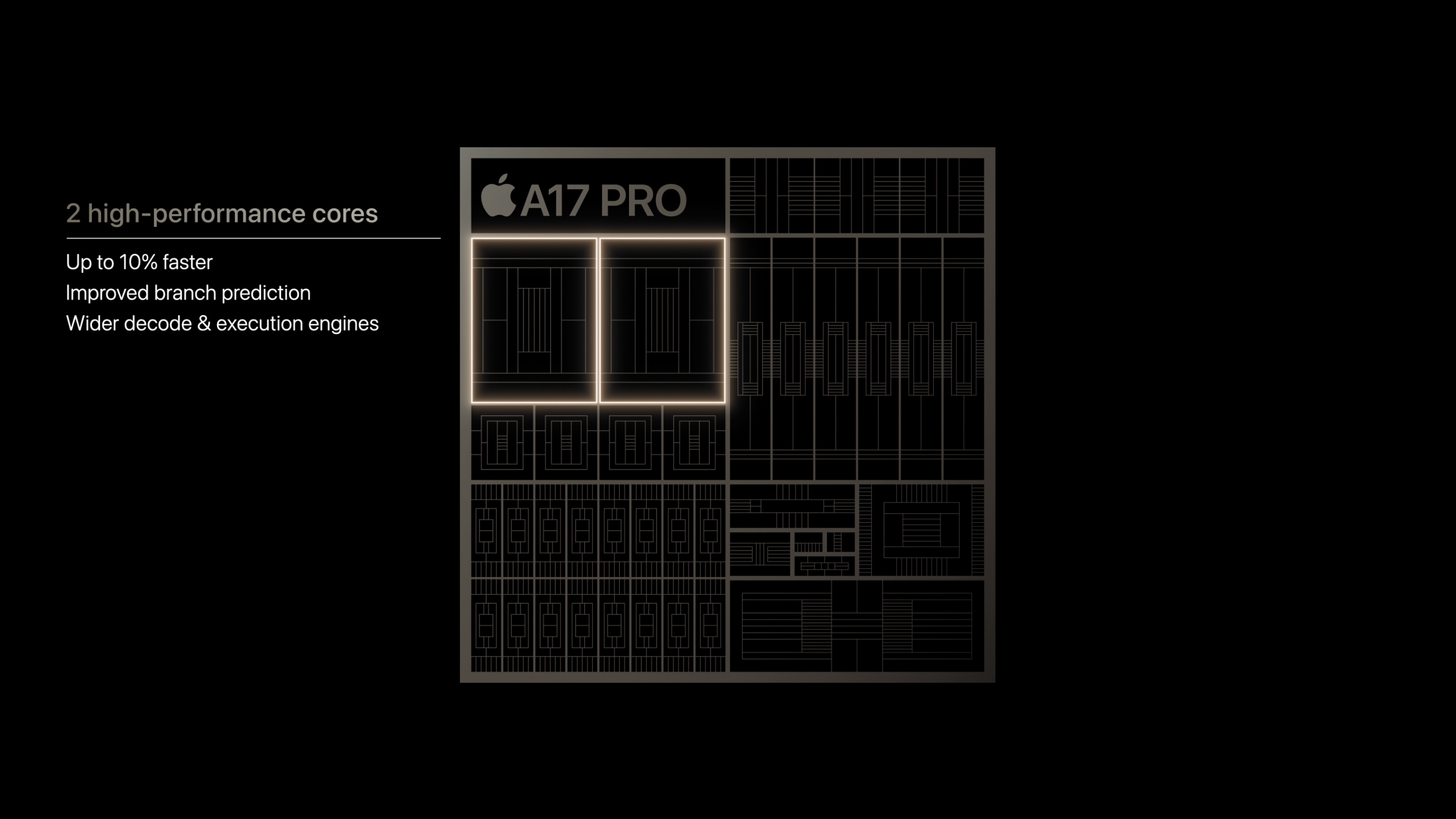Forget iPhone 15 — here’s what I want from iPhone 16
Not excited by the new iPhone? Wait for this

The iPhone 15 series has just arrived, and by all accounts Apple has made a massive number of improvements to the line-up. But that doesn’t mean the iPhone 15 is perfect, and there are plenty of upgrades we’d like to have seen but didn’t. That means the pressure is on the iPhone 16 to fill that void.
We’re still a year away from actually seeing the iPhone 16, but that doesn't mean there's nothing to talk about yet. We’ve already started hearing rumors about what changes could come to the phone, and there are plenty of ways we’d like to see Apple improve the iPhone experience next year.
So here are 9 things we’d like to see on the iPhone 16.
Better screens for non-Pro models

One of the biggest disappointments for the iPhone 15 and iPhone 15 Plus is the lack of upgrades to the display. Adding Dynamic Island is one thing, but both phones are still limited to the same 60Hz panel we’ve had for the past few years — all while the iPhone 15 Pro and Pro Max get to enjoy the benefits of ProMotion’s adaptive 120Hz refresh rate.
The iPhone 16 needs to finally up the ante on refresh rate, and at the very least Apple needs to offer a screen capable of reaching 90Hz. But considering that isn’t all that impressive, a push towards 120Hz across the whole line-up would serve Apple better. Here’s hoping that the Always-On display can make that jump as well, because that’s also well overdue.
Under-display Face ID sensors

Ever since Apple introduced Face ID and the notch back in 2017, it’s been slowly chipping away at the amount of screen space all those sensors take up. Slimmed down notches, disappearing sensors, which has all culminated in the current Dynamic Island design. Now it’s time for Apple to take it a step further.
We’ve already heard rumors Apple could push all the Face ID sensors below the display with the iPhone 16 or iPhone 17, and we are all for it. If Apple can manage this, it means one less cut-out in the iPhone’s display — leaving a single hole-punch for the selfie camera. Fewer cutouts means more space for other things at the very top of the screen.
Get instant access to breaking news, the hottest reviews, great deals and helpful tips.
Who knows, maybe someday Apple will be able to hide the selfie camera under the display as well. It’s already been done on other phones, but the results are often less than impressive. But give it a few years and someone might be able to ramp up the quality of the hidden camera — maybe even Apple itself.
Better optical zoom — and tetraprism on iPhone 16 Pro

The iPhone 15 Pro may be lacking in new camera hardware, but the iPhone 15 Pro Max’s tetraprism lens is a big step forward for Apple photography. But that’s not to say things couldn’t be better next year. For starters we’d like Apple to add the tetraprism lens to the iPhone 16 Pro, enhancing the phone’s telephoto capabilities beyond the measly 3x magnification available right now.
There’s a lot of speculation as to why the phone didn’t get the upgrade, ranging from production issues to the fact the phone is too small to accommodate it. In either case, it’s something Apple can work on fixing for next year. Especially if those rumors of a larger iPhone 16 Pro end up being true.
But that’s not all. The iPhone 15 Pro Max’s 5x optical zoom is basically fine right now, but there’s no harm in offering more optical zoom in iPhone 16 Pro Max — or Ultra, if that’s what it ends up being called. Considering the Samsung Galaxy S23 Ultra offers 10x optical zoom, and the S24 Ultra is rumored to have a hybrid lens with variable optical magnification, Apple needs to step up if it wants to avoid being left too far behind.
Faster data transfer — and Thunderbolt

The iPhone 15 made history by switching to USB-C, though the results were… disappointing to say the least. But iPhone 16 could give Apple the opportunity to fix that, and ensure better data transfer speeds across the line-up. And if Apple really wanted to impress everyone, adding Thunderbolt to the Pro models would be the way to do it.
The good news is that the former is pretty likely. It’s speculated that because the iPhone 15 has last year's A16 Bionic, it’s limited by the A16’s USB controller chip — which was designed for the USB 2.0 Lightning cable. If that’s the case then transitioning to the A17, be it a Bionic or Pro, should allow the non-Pro iPhone 16 models to send and receive data a little faster — alongside all the other benefits of USB 3.0.
As for the Pros, we’ll be looking at a phone with the A18 chipset next year — and there’s no telling how that will change things. Needless to say Thunderbolt 3 is a lot better than regular USB 3 (or 3.1 and 3.2), with better accessory support and double the data transfer speeds. So it could end up being a relatively easy upgrade.
Better battery life and faster charging

Unfortunately the switch to USB-C hasn’t really improved the iPhone 15’s charging capabilities, with the phones limited to taking in 20W-27W of power. iPhones have been at that level for the past few years now, and it’s about time things improved — even if it’s just by a little bit. A jump to 30W would definitely be a win, though we would like to see the rumored 35W charging speeds come to fruition.
As for the batteries themselves, Apple has been doing a very good job. The iPhone 15 Plus and Pro Max lasted over 14 hours with our testing regime, while the iPhone 15 and 15 Pro proved to be noticeably better than their iPhone 14 counterparts. So we’d like to see more of this, and hopefully get all four iPhone models with battery lives that exceed the 12 hour mark. Considering the efficiency improvements on the A17 and the potential for more battery capacity in the phones, that shouldn’t be too big a challenge.
Let the Action button do more

The Action button is one of the more interesting features to hit the iPhone 15 Pro, but its practical use is pretty limited. As we’ve found in our time with the phone, you’re restricted to a single action at any given time. The fact that there are so many things that can be paired to the button is great, but it would be better if you could pair multiple things to the button.
Apple doesn’t even need to make the process that much more complicated either. All it needs to do is allow the use of multiple taps to launch specific actions. So a single tap might turn the flashlight on and off, while a double tap could open up the camera app. There are limits to how far you can go with this, and anything over three taps would be a little extreme — but more functionality is always better than less. Especially if users get to retain their option to choose how it all works.
256GB storage as standard and introduce 2TB

As time goes on we end up needing more and more storage. Apps get bigger, videos and photos capture more detail, and system software treats storage like a mouse would treat an all-you-can-eat cheese buffet. It’s now getting to the point where 128GB of storage only goes so far, especially if you don’t have access to the cloud.
The solution for iPhone 16? Do what Apple did with the iPhone 15 Pro Max, and set 256GB as the minimum level of storage. Then to even things out increase the maximum amount of storage to 2TB — which would be perfect for those people who need that gargantuan amount of space and don’t feel like paying $10 a month for an iCloud subscription.
Better silicon

Apple offers the best mobile chipsets around, but that lead can feel a little tenuous at best. Android chipsets are doing their best to catch up, with the Snapdragon 8 Gen 2 for Galaxy even managing to beat the A16 Bionic in graphics benchmarking tests. The A17 Pro is once again blowing away the competition in benchmarking tests, but more chips will be arriving over the next few months.
It’s key that Apple keeps pushing the boundaries of what its mobile chips can do. Because taking a breather will only allow for the likes of Qualcomm to catch up a little bit more. That’s especially true once the rest of the mobile industry gets access to 3nm chips — which offer better efficiency and performance.
Where those chips could go is a totally different matter, but that’s for the engineers to figure out. Though it would be nice if the iPhone 16’s A17 chipset isn’t just a carbon copy of the A17 Pro.
No price increases

It’s an obvious ask when you think about it, but given the sheer number of rumors regarding a potential iPhone 15 price increase, it feels like it’s only a matter of time before iPhone prices go up again. I’m talking about a proper price increase, not an iPhone 15 Pro Max-style increase which raised the phone’s minimum price as a consequence of scrapping the 128GB model.
iPhones are expensive enough as it is, and nobody likes having to pay a higher price simply because they want a new phone. iPhones will still sell in huge numbers, but the consequence of having to pay more may force people to keep hold of their phones for longer — which will have an impact a few years down the line. So the best thing Apple can do is hold off on that for as long as it can.
More from Tom's Guide
- iPhone 15 battery life tested — here's how long all four models last
- iPhone 15 vs iPhone 15 Plus vs iPhone 15 Pro vs iPhone 15 Pro Max compared
- iPhone 15 delays — here’s the latest delivery dates

Tom is the Tom's Guide's UK Phones Editor, tackling the latest smartphone news and vocally expressing his opinions about upcoming features or changes. It's long way from his days as editor of Gizmodo UK, when pretty much everything was on the table. He’s usually found trying to squeeze another giant Lego set onto the shelf, draining very large cups of coffee, or complaining about how terrible his Smart TV is.
